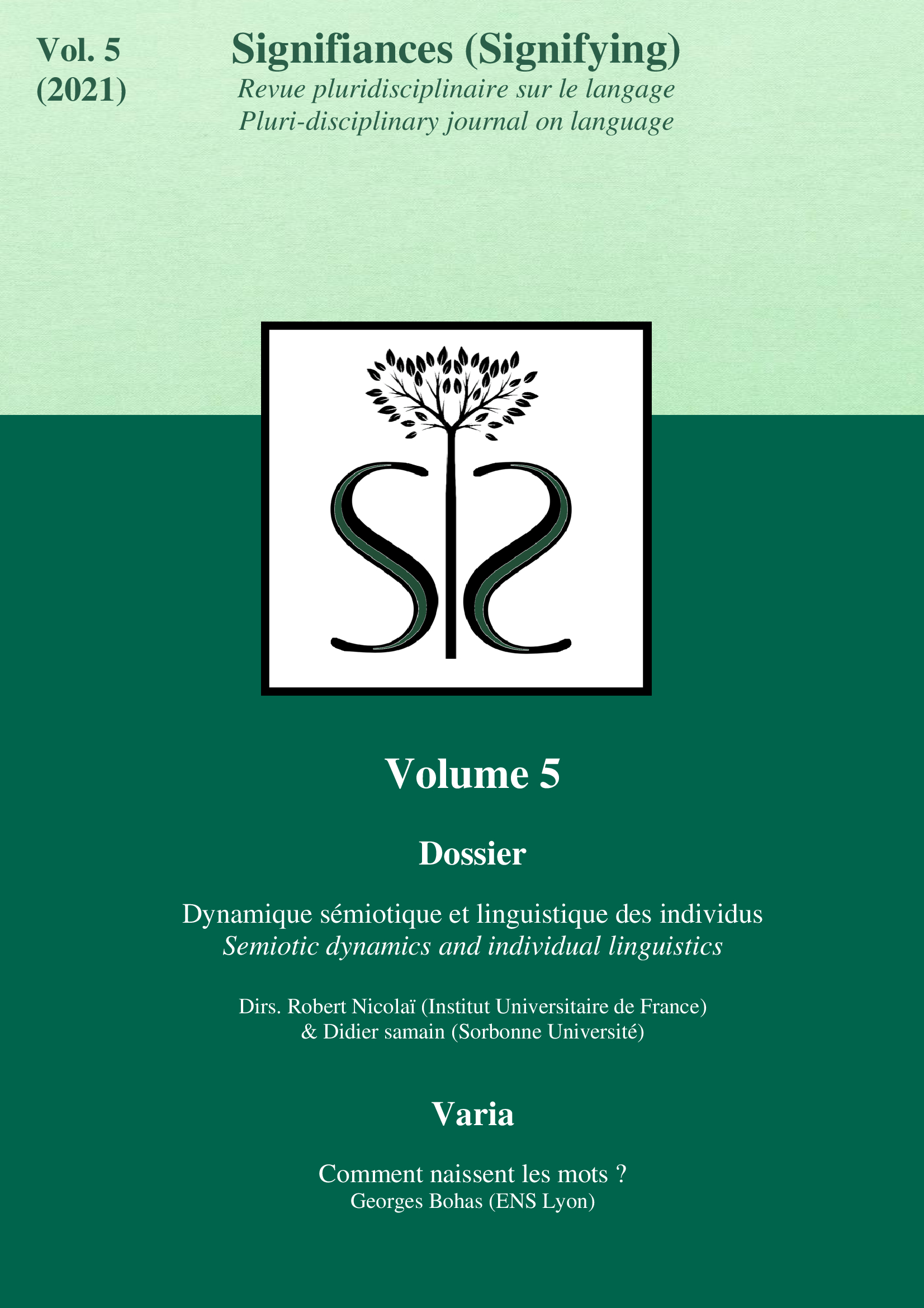Comprendre l’autre comme soi-même ? Pour un modèle médiationniste de l’intercompréhension linguistique
DOI :
https://doi.org/10.52497/signifiances.v5i1.312Résumé
Cet article entend contribuer à une modélisation des conditions individuelles de l’intercompréhension linguistique. On montre d’abord que le schéma ordinaire en termes de recouvrement plus ou moins strict des compétences se heurte à une très forte variabilité sémantique interindividuelle (géolectale, sociolectale, « plurilectale », « topique », ou liée à la diversité des historiques individuels) concernant tant la disponibilité des différents signes que la composition de leurs significations. On explique ensuite comment une théorie médiationniste permet d’échapper à ces difficultés en mettant à profit l’interdépendance entre langue et cognition et en restituant les dynamiques individuelles constitutives des compétences linguistiques. On présente enfin une typologie des contenus de signification prenant en compte la structuration polyphonique des significations à l’échelle individuelle avant de redéfinir sur ces bases l’expression « partager une langue. »


